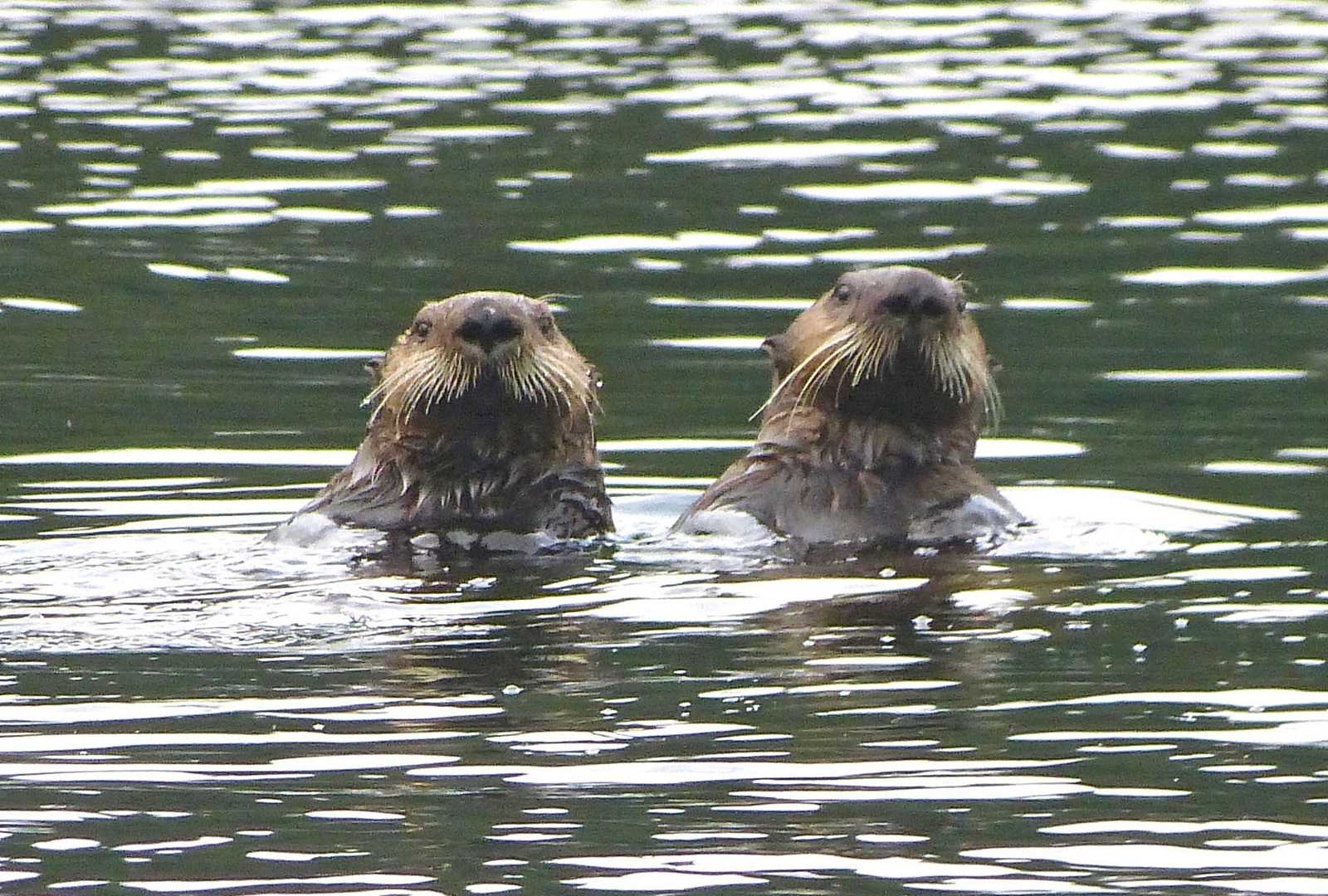When Russians colonized Alaska in the mid-1700s following the voyage of Vitus Bering, it was for only one thing: the incredibly rich pelts of sea otters. These large members of the weasel family differ from most other marine mammals in using dense fur rather than blubber to keep warm, and this was very nearly the cause of their demise. In little more than a century, Russian hunters (or, more correctly, Aleut hunters under the control of the Russian American Company) had reduced the population of sea otters nearly to extinction. This morning, as we sailed through Icy Strait, we saw plenty of evidence that their abundance has recovered. Sea otters spend most of their surface time floating on their backs, buoyed by air trapped in the fur, with their rear feet sticking up into the air. They are constantly active, busily grooming their fur and then diving into the kelp beds for prey, perhaps a sea urchin, a crab, an octopus, or a sea star.
The National Geographic Sea Lion entered Port Althorpe, a fjord that cuts into northern Chichagof Island. Some of us chose to explore by kayak or by our inflatable landing craft, providing closer views of the sea otters. On shore, we walked across a broad tidal flat, passing tracks of Sitka black-tailed deer and coastal brown bears. These tracks are only hours old, made since the last high tide, so the bear could not be far from us. At the far end of the tidal flat, we found a stream that carries water from the forest to the sea, and also salmon returning from the sea to spawn in the gravel of the stream bed. It is the spawning season for salmon, and we could see both pink or humpbacked salmon and chum salmon in the shallow water. Piles of bear droppings lining the stream represent nutrients brought from the sea in the bodies of the returning salmon to fertilize the land.
We moved a short distance to the Inian Islands, where the water of Southeast Alaska meets the Pacific Ocean. On each tidal cycle, water rushes in and rushes out again. Steller's sea lions gather here to exploit the bounty of salmon returning from the sea on the incoming tides. (They were described by and named for the Bavarian naturalist on Bering's ship, Georg Wilhelm Steller.) The sea lions are surprisingly agile, clambering up the rocks and over their neighbors in noisy social heaps. These are non-breeding animals, immature males waiting to get big and strong enough to compete on breeding colonies for territory and the right to breed with a harem of females, and large, old males who are no longer able to compete. The best way for a sea lion to get big is to feed voraciously on the seafood buffet in the roiling tidal water. We watched several of them ripping apart a large halibut, with the scraps quickly devoured by an entourage of gulls.







